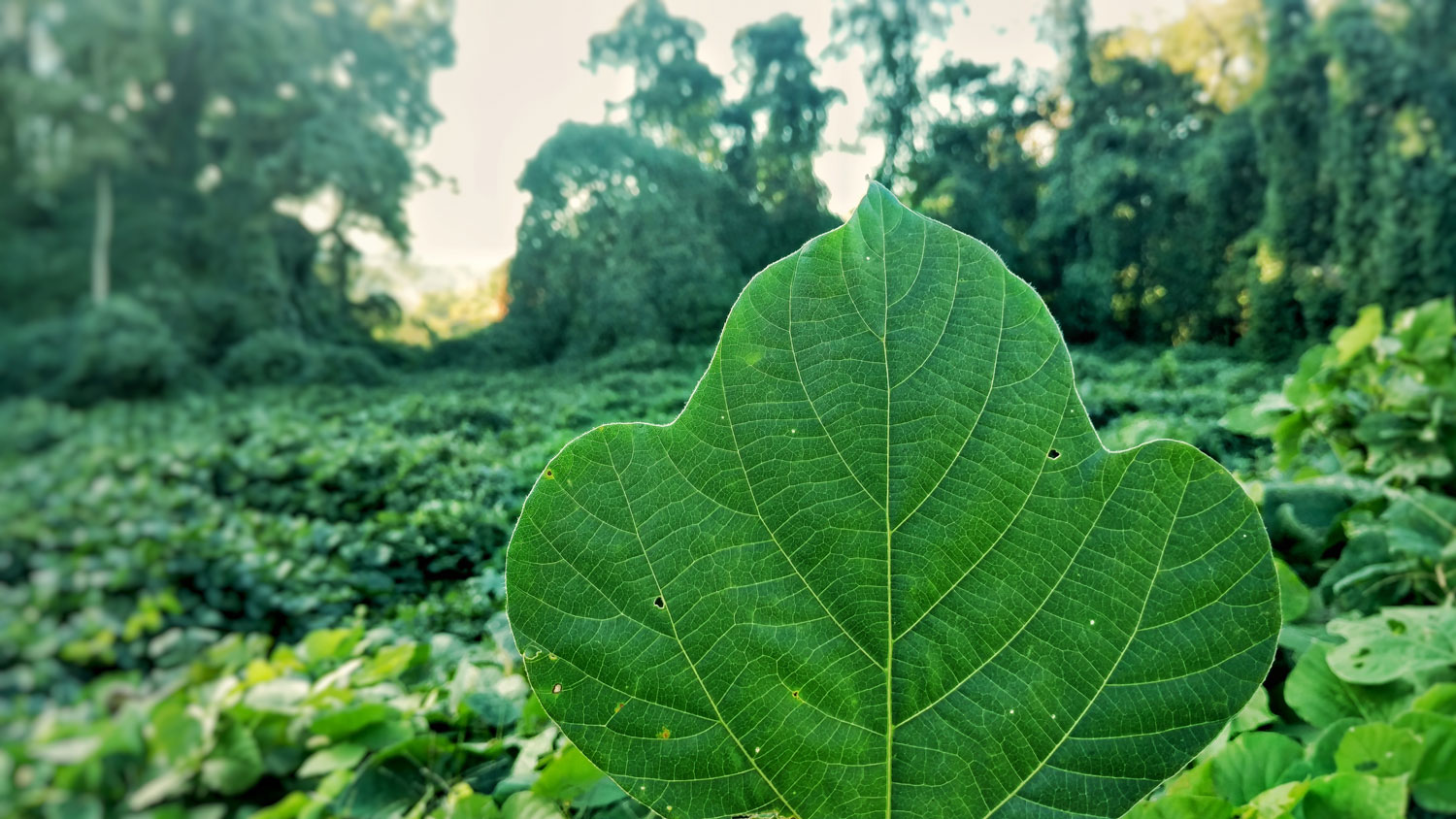
Across the globe, invasive species have infiltrated new environments and are thriving in the absence of predators, out-competing native species for survival and knocking ecosystems out of balance. This is largely due to human influence and global travel and trade introducing these species to new places.
So what exactly makes a species invasive?
- They are generally considered non-native to the area. In most cases, this means there is a lack of natural controls (i.e. predators; diseases) to keep the species in check.
- They spread and grow prolifically in their new environment. They will out-compete native species that have natural predators and may not grow as quickly. They physically take up space and crowd out natives, absorb nutrients from the soil, or in the case of animals, consume food resources, and shade out natives.
Invasive species can include any type of organism, from mammals to insects to plants. At RiverLink, we focus on the management of invasive plant species, so we have put together a quick guide on commonly planted or seen invasive plants and included a recommendation for a native alternative.
Another great resource for this information is MountainTrue’s Native Planting Guide. Information on how to obtain one of these wallet sized guides can be found here.
Unfortunately, many nurseries and stores still sell invasive plants that anyone can buy. Please do some research before purchasing plants you intend to plant outside! Every effort helps to restore our diverse and unique ecosystems to a healthy, balanced state. Here are some of the most common garden invasives and some native alternative to use instead.
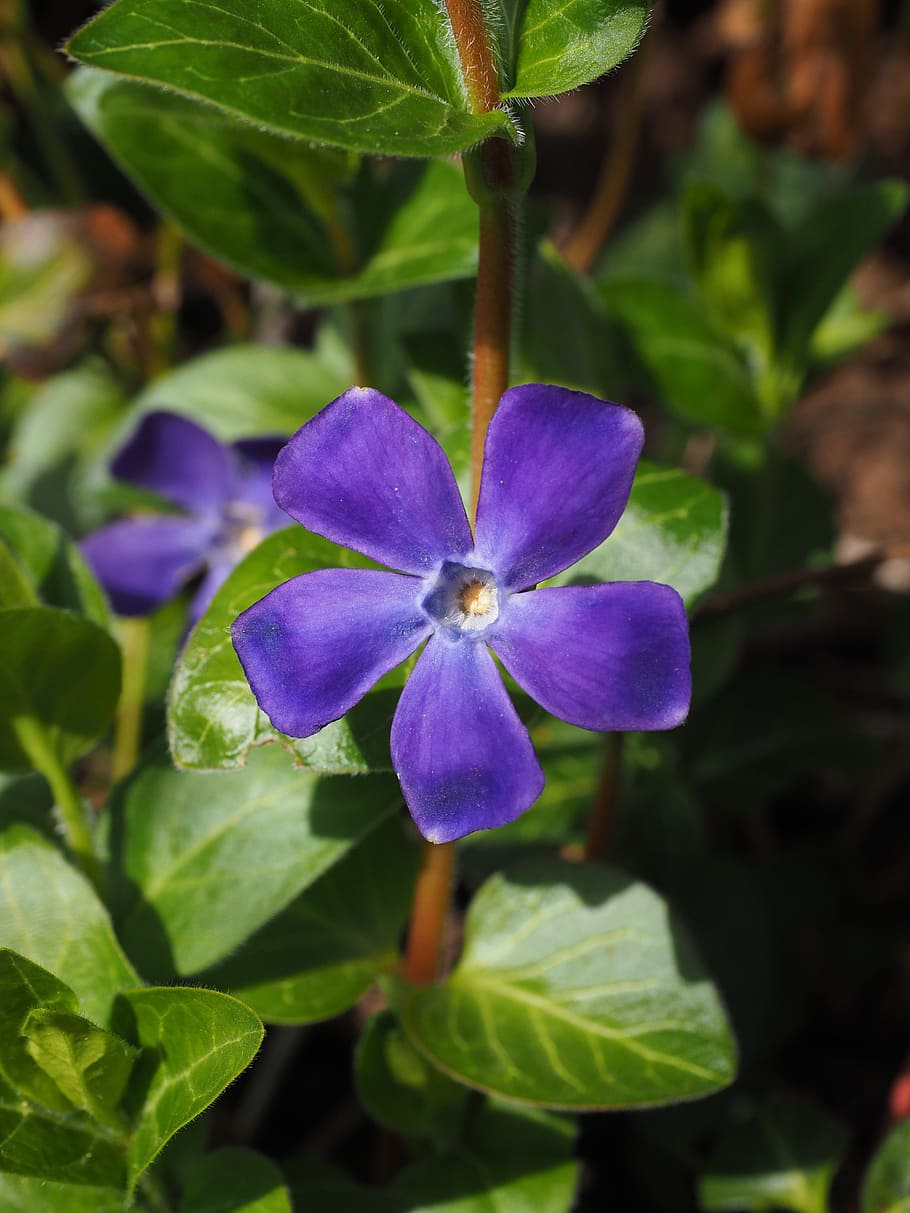
Invasive
Periwinkle (Vinca spp.)
Where: From Europe
When: Introduced in the 1700s as ornamental ground cover.
Why: Forms dense mats on the forest floor that exclude and smother native vegetation. Still commonly sold as ground cover.
How to remove: The best method is to manually remove as much of the plant as possible through pulling and digging and then bagging/burning the material. Any plant material left behind will root and a new plant will be formed. Once you manually remove as much as possible, cover the area with either a black tarp or cardboard and mulch to prevent light from reaching it. Leave this in place for at least 6 weeks to kill any leftover plant pieces or roots.
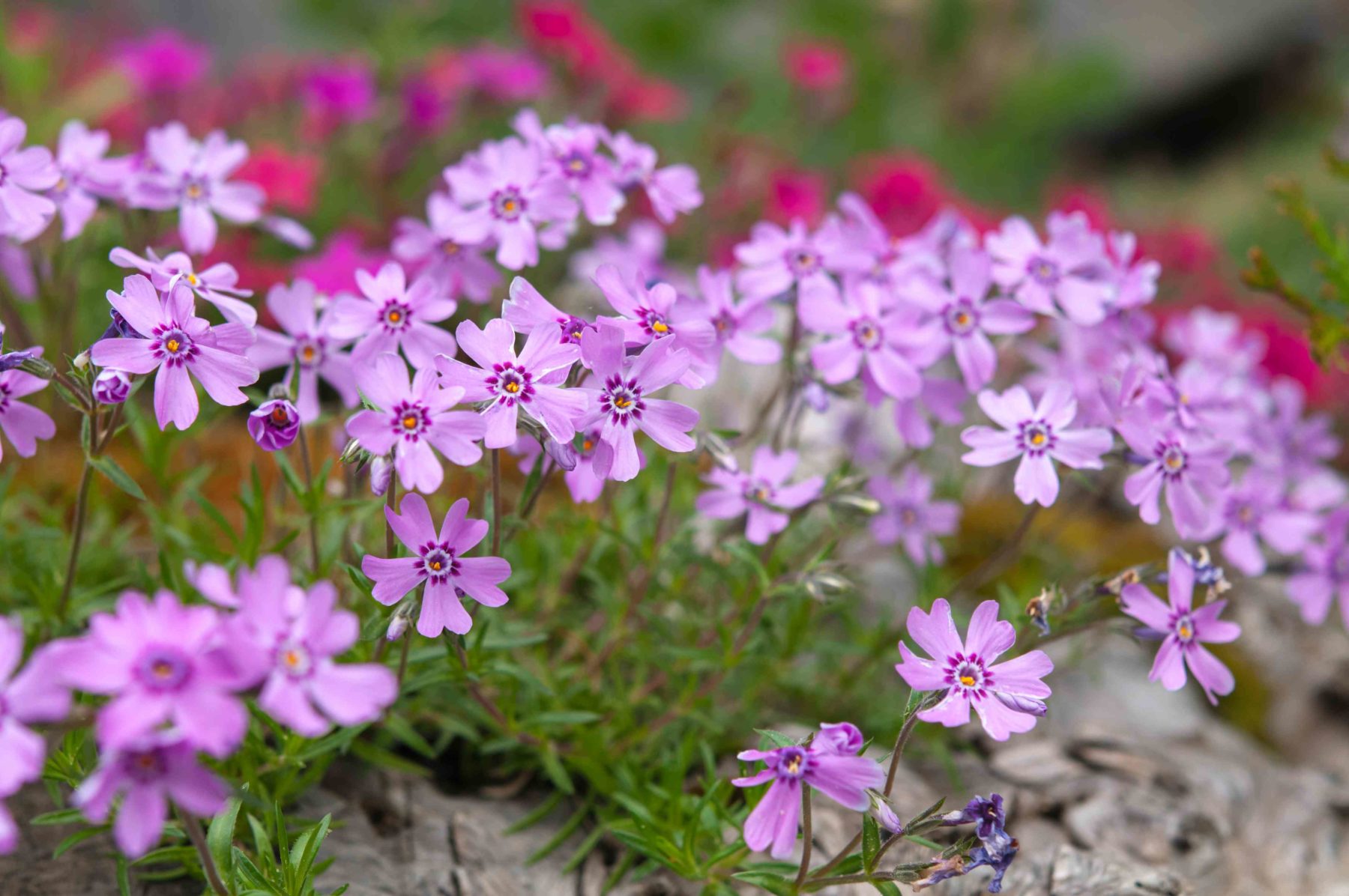
Native Alternative
Creeping Phlox (Phlox stolonifera) or Moss Phlox (Phlox subulata)
– Blooms in early spring in a variety of colors and is an excellent ground cover, forming dense mats of colorful blooms.
– It does best in full sun to partial shade*. And once established, they are very drought resistant.
– They attract butterflies and other pollinators.
– *A shade loving ground cover recommendation is Allegheny Pachysandra (Pachysandra procumbens)
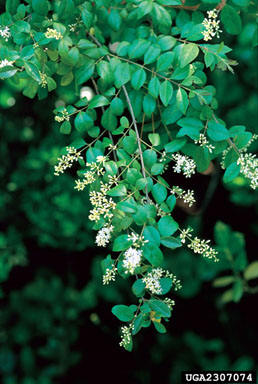
Invasive
Privet (Ligustrum spp.)
Where: From Asia
When: Introduced in the 1800s as an ornamental shrub
Why: Forms dense thickets and can dominate the understory layer, essentially becoming the only shrub present. The fruit produced has very little nutritional value to birds.
How to remove: Small shrubs can often be pulled out of the ground by hand or dug up. But for larger shrubs, you can cut near the base of the trunk and immediately apply glyphosate to the cut trunk left in the ground.
Always wear protection and follow precautions when using herbicide.
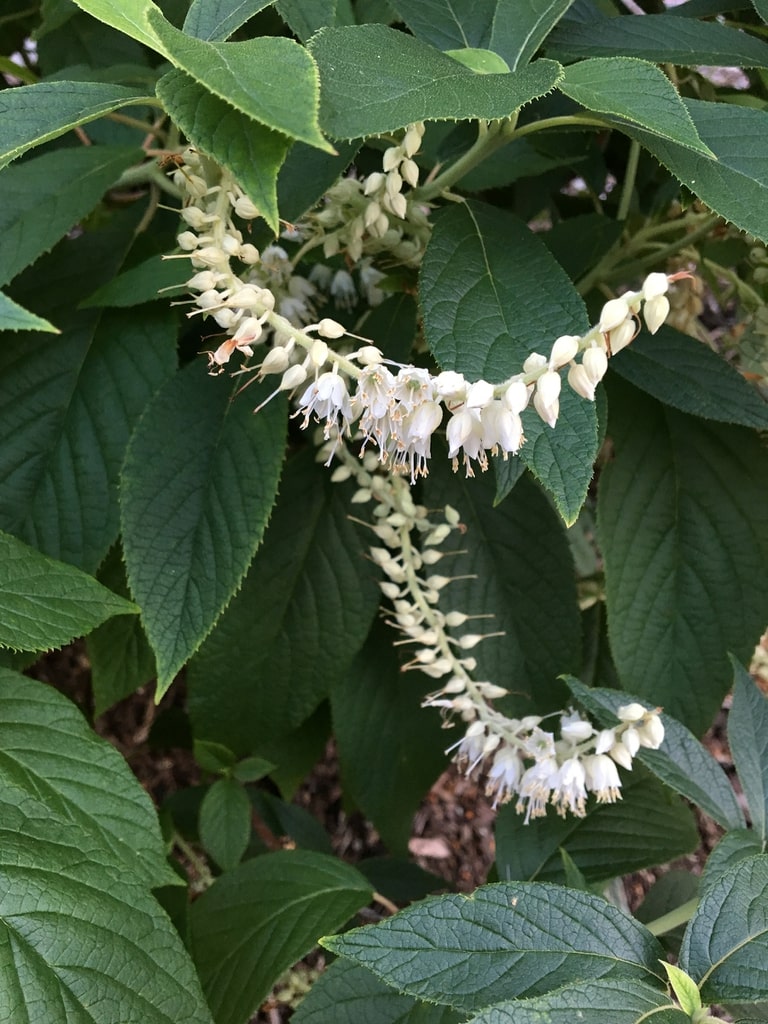
Native Alternative
Mountain Pepperbush (Clethra acuminata)
– Can grow up to 20ft or be pruned to be more shrub like.
– It has rich green foliage and prolifically blooms in the summer and attracts many pollinators, including bees, butterflies, and hummingbirds.
– The seeds are eaten by birds.
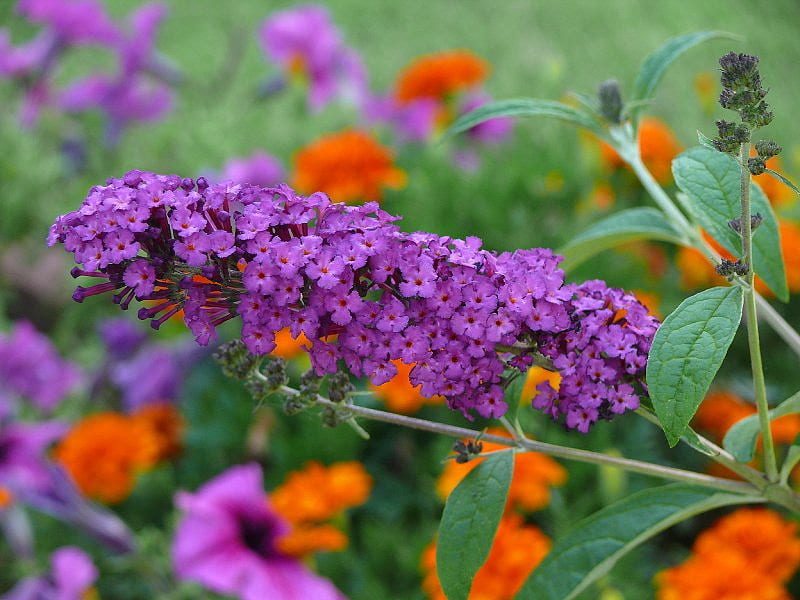
Invasive
Butterfly Bush (Buddleja davidii)
Where: From China
When: Introduced in the 1900s as an ornamental shrub.
Why: Fast growing and crowds out native plants. It can grow up to 15 ft in a single season. The flower’s nectar lures butterflies away from native plants, reducing the native’s reproductive success. Although the nectar is attractive to adult butterflies, no North American butterflies can use it as a food source for their caterpillars.
How to remove: Seedlings and smaller shrubs can be hand pulled or dug out, but the best method for larger shrubs is the same as for Privet. Cut the trunk and apply glyphosate immediately after cutting. Always wear protection and follow precautions when using herbicide.
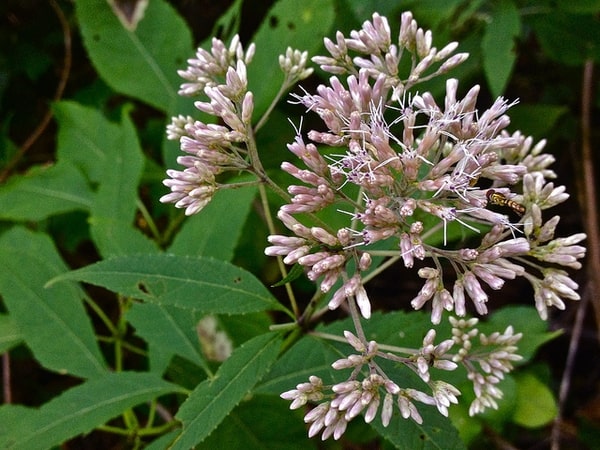
Native Alternative
Joe Pye Weed (Eupatorium fistulosum)
– Herbaceous plant that can grow 4-7ft tall with pinkish-lavender flowers.
– Prefers moist areas and full sun to partial shade. It can be cut back in the winter and divided in the fall or early spring when shoots first appear.
– It attracts many pollinators including bees and butterflies.
– Songbirds eat the seeds.
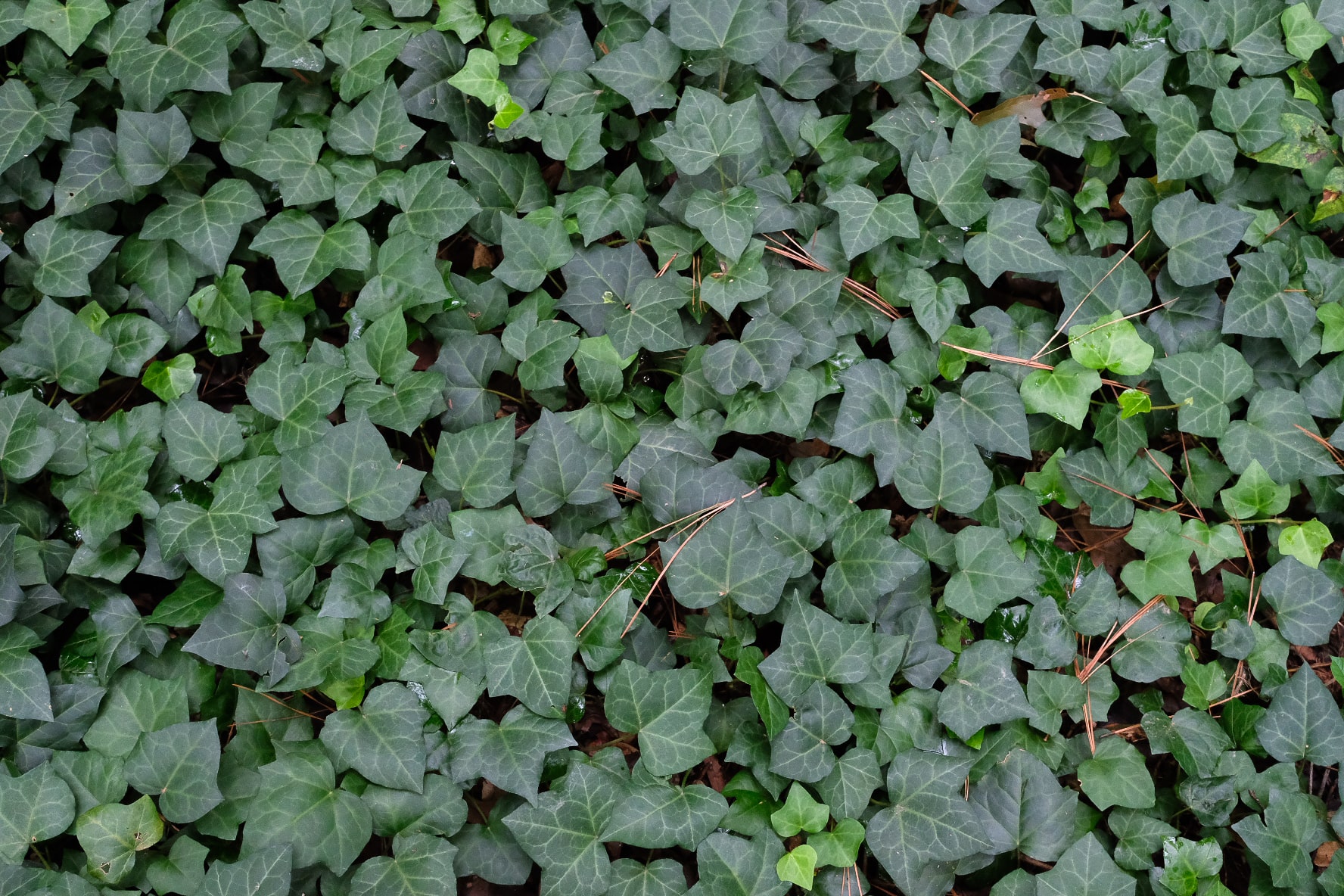
Invasive
English Ivy (Hedera helix)
Where: From Europe
When: Introduced as early as 1727 as an ornamental.
Why: It quickly takes over and shades out native vegetation. As it climbs trees, it can eventually dominate the canopy, shading out the trees. And the excess weight of the vines increases the likelihood of trees suffering damage or falling during storms.
How to remove: You cannot pull large amounts of this vine from tree trunks while it is alive. Doing so can tear off too much bark and kill the tree. You must “girdle” the ivy all the way around, removing at least an inch out of each vine. It will slowly die over the next few months and can then be removed from the tree.
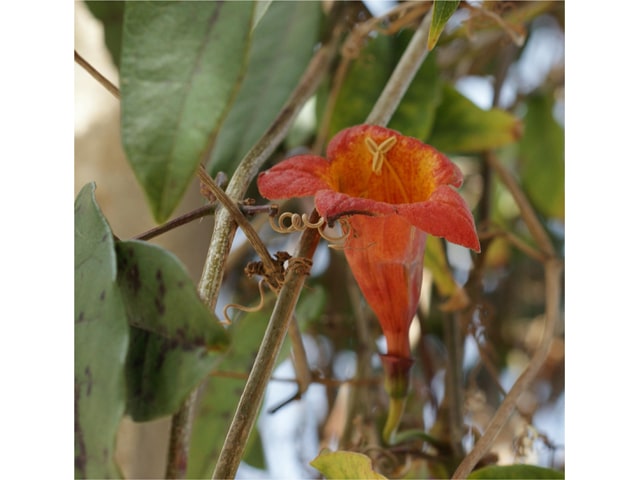
Native Alternative
Crossvine (Bignonia capreolata)
– Climbing, woody vine with yellow to red trumpet shaped flowers that bloom in the spring. It has “adhesive pads” at the end of its tendrils that allow it to climb on stone, bricks, and fences without support.
– The blooms attract hummingbirds and they are an early nectar source for both butterflies and hummingbirds.
– It can be cut back in spring to encourage flowering.
Sources
https://extension.umd.edu/resource/butterfly-bush
https://plants.ces.ncsu.edu/
https://www.wildflower.org/
https://www.invasivespeciesinfo.gov/
MountainTrue’s Native Planting Guide
